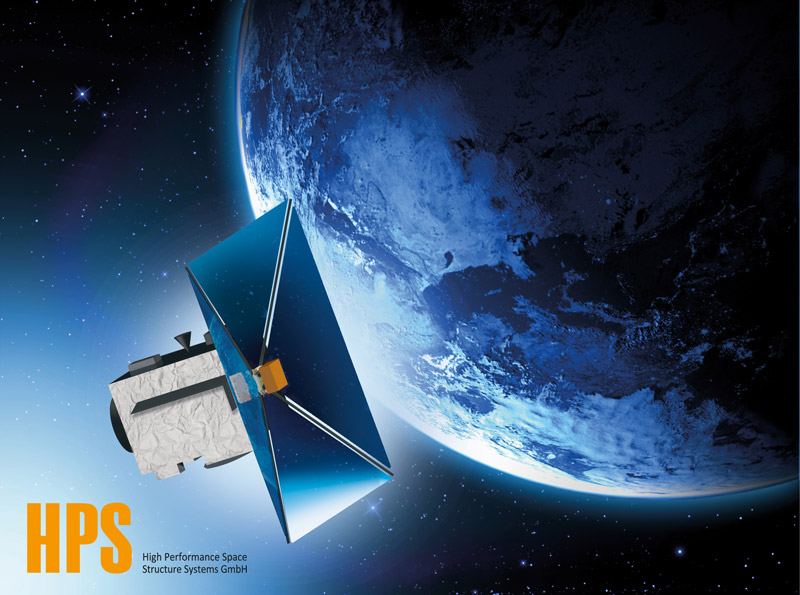September 2018
HPS: On the Fast Track Towards Success
3 million more for next-stage development of deorbit device ADEO
With the support of the German Space Agency delegation HPS has been awarded a 3-million Euro GSTP-contract with ESA for development and manufacturing of a large passive dragsail version of ADEO with presumably about 25 squaremeters in size. The goal of the activity is the delivery of a flight ready protoflight model prepared for an in orbit demonstration mission as early as 2020. Final design and size – on the basis of a market analysis currently undertaken– will be frozen in December 2018.
Like projects on system level, for example, ARIANE, GALILEO and COPERNICUS, ADEO on the subsystem level is classified as one of Europe´s „lighthouse projects“ in space, since
- a solution for fast deorbit of satellites especially from the very crowded LEO orbits at 300-750 km perigee is the absolute prerequisite for sending future single satellites and even whole constellations of short-lived satellites into space in the first place
- ADEO by HPS is Europe´s top chance to gain and keep the globally lead position on the emerging world market with a critical technology ensuring the continent´s independence in space.
- ADEO will in the end address the market commercially and consequently create new jobs as well as contribute to yet another increase of the return-on-investment ratio of public funding in space.

While a 2.5 squaremeter ADEO-N test version is waiting in New Zealand to go on its „Pride of Bavaria“-mission on top of the Electron rocket (#ItsBusinessTime of Rocket Lab USA), this second development – ADEO-L – represents an upscaled version of just 10 Kilo mass and 25 squaremeters enabling passive de-orbiting without the need of any extra propulsion. Due to its virtually unlimited variability and scalability ADEO can be applied to return dead satellites of any size and mass. For example, the current version supported by ESA (and DLR) will reduce the time for disposal of a 500 kg satellite at 650 km altitude from 460 years down to just 11 years, while the small version currently mounted on top of Electron could drag for example a 10 Kilo cube satellite (6U = 30cm x 20cm x 10cm) down from a 500km orbit in 77 days instead of 26 years.
The large version is planned be applied as a protoflight model to a 200-1000kg satellite with an In-Orbit Demonstration as early as 2020. The In-Orbit Demonstration planning phase has already started and HPS is looking among other things for satellite providers that would take the PFM onboard their missions free of charge.
The ADEO subsystem is designed, assembled and tested by HPS as prime contractor of ESA and supported by eight subcontractors, 5 of them being SMEs. Main subcontractors are DLR institutes Bremen and Braunschweig and RUAG Space Germany (formerly HTS).
